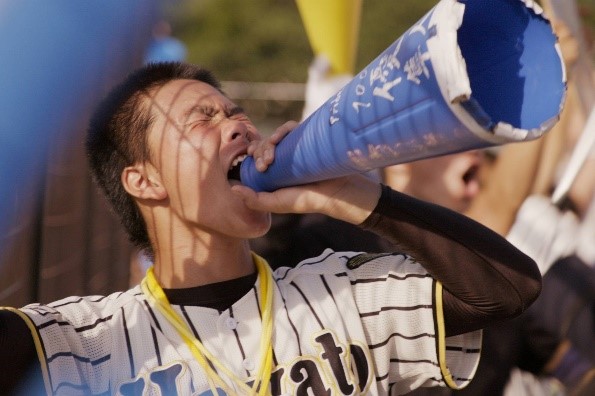‘Koshien: Japan’s Field of Dreams’: This underdog story is hard to beat

(The Japan Times) The annual National High School Baseball Tournament, popularly known as “Koshien” after the Hanshin Koshien Stadium in Hyogo Prefecture where it takes place, is familiar to many people in Japan, but unknown to most outside the country.
So it was unexpected, if entirely deserved, that “Koshien: Japan’s Field of Dreams,” Ema Ryan Yamazaki’s compelling and illuminating documentary on the tournament, would air on American sports network ESPN in June at what would ordinarily be the peak of the Major League season.
But this is not an ordinary year and “Koshien” is not a typical Japanese sports documentary. Yamazaki not only presents an easy-to-follow primer on the tournament’s history for newbies, but also focuses much of the film on a struggling team, Yokohama Hayato, that last went to Koshien in 2009.
She did not, however, pick the team out of a hat. Long-time Yokohama Hayato coach Tetsuya Mizutani was a mentor to Hiroshi Sasaki, the current coach of the Hanamaki Higashi team in Iwate Prefecture, a Koshien powerhouse. Among Sasaki’s former players are Shohei Ohtani, now a pitcher and designated hitter for the Los Angeles Angels, and Yusei Kikuchi, a pitcher for the Seattle Mariners. At the time Yamazaki was filming, Sasaki was gunning for his 10th appearance at Koshien, compared to Mizutani’s second.
The film sets up dramatic tension between the two coaches — and an enlightening contrast between the old-school methods of Mizutani, who calls himself a “stubborn man of the 20th century,” and Sasaki, who adapts to the times while keeping what he considers the best of the old ways. He coaches a player on his batting style using a smartphone video clip, but instills the sort of martial arts ethos, symbolized by the players’ shaved heads, that has characterized baseball in Japan for more than a century.
The film, however, has no agenda other than to present the more human aspects of its subjects, flaws and all. That it succeeds so well is due to the trust Yamazaki built with her subjects over months of filming. Ryumon, an earnest high school senior who plays for Hayato, opens up to her as he reflects on his failure to make the A-team: “We lost two tournaments because of my mistakes,” he says. “I just want to chase that ball, it’s all I need in life.”
But whether he does is not a given: The film follows its storylines where they lead, even when they veer from a zero-to-hero narrative. Only 20 of Hayato’s 129 players can make the A-team while 186 teams in Kanagawa Prefecture, where Hayato competes, are vying for one Koshien invite. Nationwide, nearly 4,000 teams are aiming for the Koshien winner’s cup.
That means we see a lot of disappointment and tears, and the players, coaches and families make big sacrifices. Mizutani’s wife says to the camera, “I have only resentment,” since her workaholic husband is never home. Meanwhile, Mizutani confesses that he has never seen his son, a talented athlete soon to join Sasaki’s team, play baseball.
Why do they do it? The sight of Sasaki’s team erupting with joy after winning the prefectural tournament suggests the classic reason: Victory is sweet. But change is also afoot: At the start of a new season, Sasaki tells his stunned players that he is ending the shaved-heads rule. “Let’s make new history!” he says.
But the history Yamazaki has already recorded, with its heartbreaking agonies and hard-earned ecstacies, make “Koshien” eminently worth watching.



